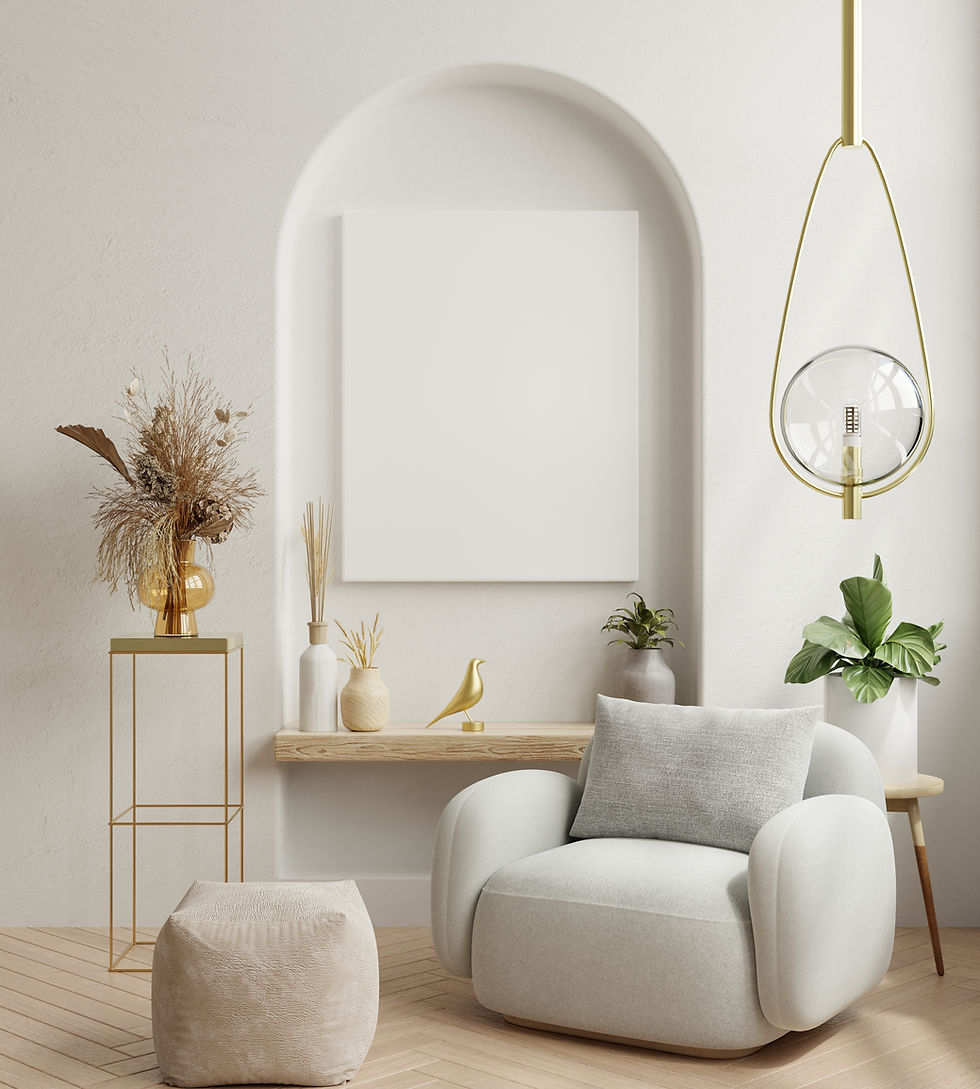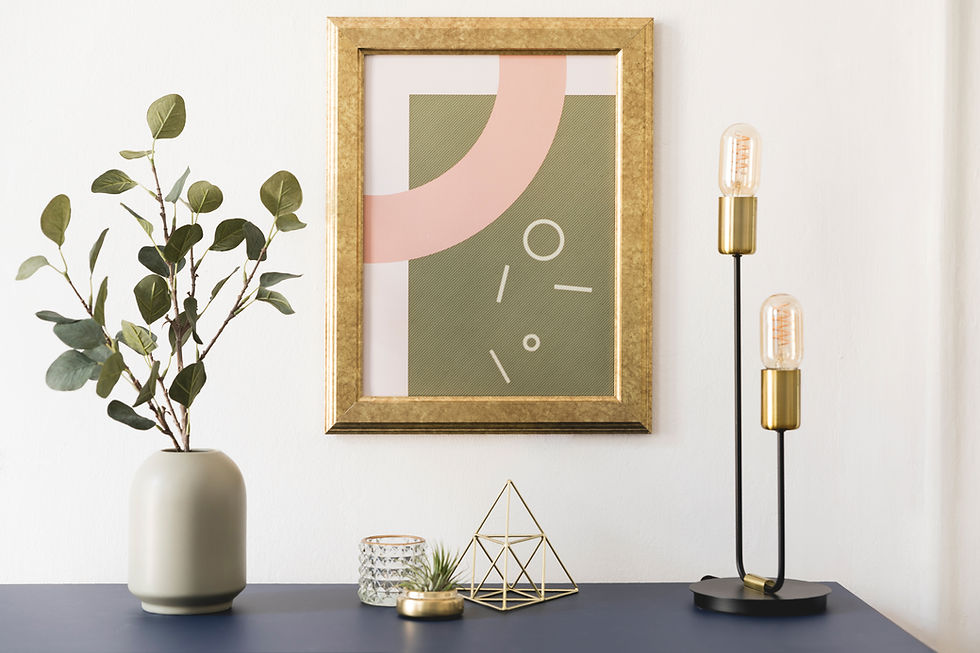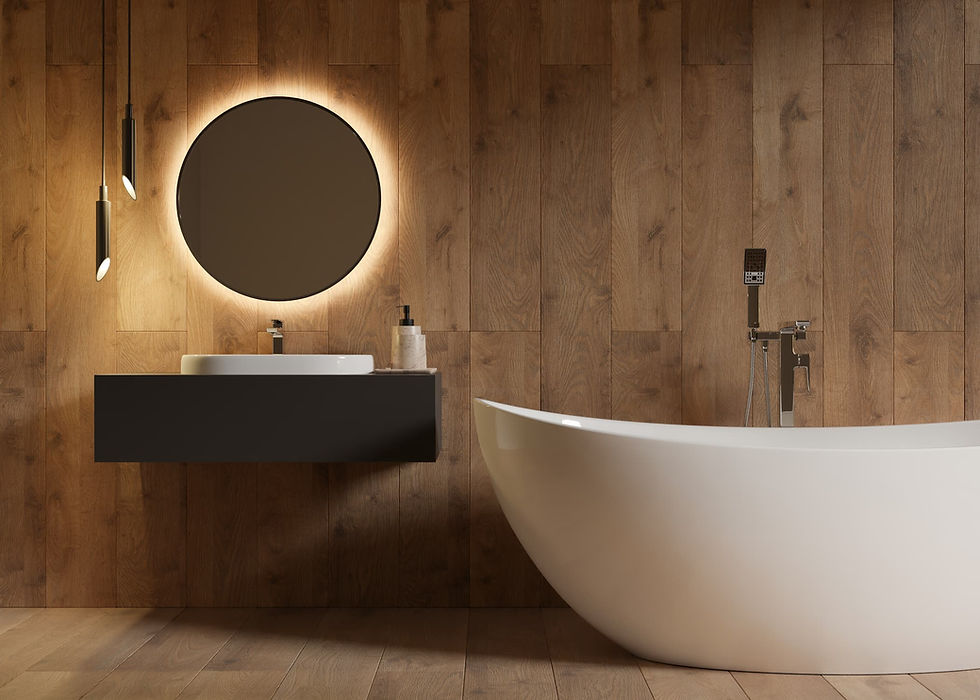Proportions and the Golden Ratio in Interior Design — Why They Matter and How to Use Them
- Ирина Колб

- Jun 28
- 3 min read
Ever walk into a room and feel like something’s off, even though all the furniture and décor seem to be in place? The sofa’s there, the artwork’s up, the rug is down — but the space still doesn’t feel right.
Chances are, the problem isn’t the color palette or the furniture itself — it’s the proportions.
Great interior design isn’t just about beautiful items. It’s about creating a balanced system where sizes, shapes, and spacing work together. That’s where the concept of proportion comes in — along with one of the most timeless rules in design: the golden ratio.

What Are Proportions — and Why Do They Matter?
Proportions are simply the relationships between the sizes of objects and the space around them. If you place a tiny chair next to a massive dining table, it will look like a toy. Hang a small picture on a big, empty wall — and it will feel lost.
When everything in a room is scaled to fit together, it creates a sense of flow, balance, and comfort. Proportions help make that happen.
What Is the Golden Ratio
The golden ratio is a visual rule of balance that shows up in nature, architecture, and art. In interior design, it's a simple guide: One element should be roughly 1.6 times bigger than the other.
You don’t need to remember the number 1.618 exactly — just know that if one piece is about one-and-a-half times larger, it tends to look just right. That’s the essence of the Golden Ratio in Interior Design.

Real-Life Examples of the Golden Ratio in Interior Design
1. Rug Size Compared to Sofa
Mistake: A rug that ends halfway under the sofa or sticks out too far in all directions.
Better: The rug should match or relate proportionally to the sofa.
Rule of thumb: Ideal rug width = sofa width × 1.6
Example: If your sofa is 80 inches wide, the rug should be around 128 inches (80 × 1.6) — or at least 64 inches to visually anchor the seating area.
2. Artwork Above a Bed or Sofa
Mistake: Hanging a picture that’s too small for the wall space.
Better: The width of the artwork should be 60–70% of the furniture width below it.
Example: If your bed is 72 inches wide, choose artwork (or a group of pieces) that's around 43–50 inches wide.
For multiple pieces, try using sizes like 40", 25", and 15" — this keeps the eye moving and maintains balance.
3. Decor Grouping on a Shelf
Let’s say you have a shelf that's 48 inches long. Instead of placing symmetrical decor on each side, try this:
Large vase: 16 inches
Medium book stack: 10 inches
Small sculpture: 6 inches
That’s a 16:10:6 ratio — close to the golden ratio where each element is about 60% the size of the one before.
It looks relaxed, natural, and balanced — not stiff or forced.
4. Dining Table and Chair Height
This is both about comfort and visual harmony.
Example: If your dining table is the standard 30 inches tall:
Your chair seat height should be 18 inches
Backrest height should be around 36–40 inches
This makes the chair feel like it belongs — not too low, not too towering.
Quick Tip: How to Check Proportions Easily
Take a photo of your room with your phone. Photos help reveal imbalance you might miss in person. Then, mentally (or digitally) draw rectangles around furniture and objects. Compare their sizes.
If something feels too large or too small — try adjusting mentally. Often it becomes clear what needs to be replaced, resized, or rearranged.
What to Remember
Proportion is visual logic. Even budget decor looks elevated when properly scaled.
The golden ratio is your cheat code: try making one object about 1.6× the size of another.
No calculator needed. Train your eye. Ask: does this feel too small? Too big? Or just right?
Planning a remodel or need reliable repair work?
We handle drywall, tile, painting, and more — with solid results and no hassle.Serving Chicago and the North & Northwest suburbs: Palatine, Arlington Heights, Buffalo Grove, and beyond.


